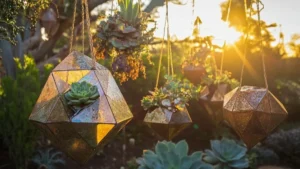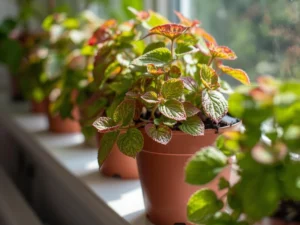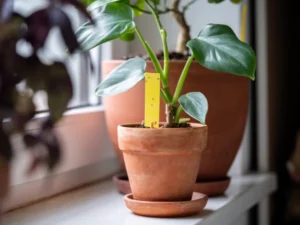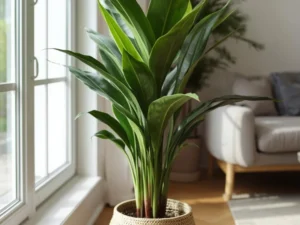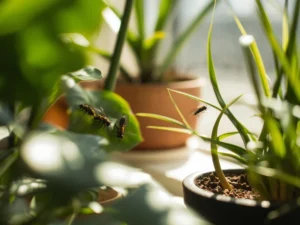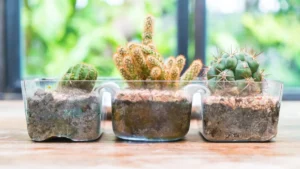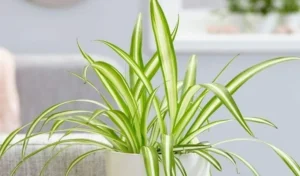Spider plants (Chlorophytum comosum) are among the most adaptable and low-maintenance houseplants. Understanding how much light a spider plant needs is crucial for its health and vibrancy. Providing the right amount of light ensures lush green foliage and the production of baby plantlets, known as “pups.”
How Much Light Does a Spider Plant Need for Healthy Growth
Spider plants (Chlorophytum comosum) thrive best when they receive bright, indirect sunlight, which is essential for their healthy growth. Providing the right amount of light ensures lush green leaves and encourages the production of baby plantlets, also known as “pups.” Typically, spider plants require around 4 to 6 hours of indirect light each day, ideally from an east- or west-facing window.
Too little light can cause slow growth, pale leaves, and reduced pup formation, while too much direct sunlight may scorch the leaves, turning them brown or crispy. For areas with low natural light, artificial lighting such as LED or fluorescent grow lights can supplement the plant’s needs, ensuring it continues to thrive indoors.
Additionally, regularly rotating the plant helps all sides receive equal light exposure, promoting uniform growth and a vibrant appearance. For more expert tips on spider plant light requirements, you can refer to Lively Root’s guide on spider plants.
Ideal Light for Spider Plants: Bright, Indirect Sunlight
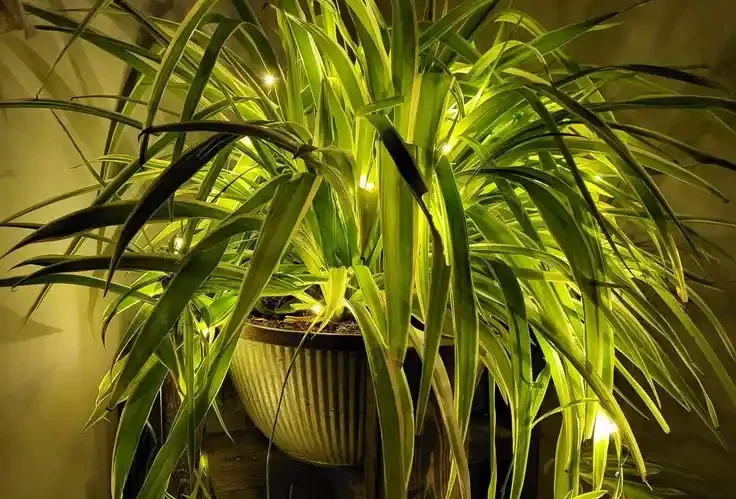
Spider plants thrive in bright, indirect light. An east or west-facing window is ideal, as it allows filtered sunlight to reach the plant without the harshness of direct sun. This type of light promotes healthy growth and vibrant foliage.
Spider Plant Sunlight Needs in Low-Light Areas
While spider plants can tolerate low light conditions, their growth may slow down, and they might not produce as many pups. Inadequate light can also lead to pale or yellowing leaves.
Avoiding Too Much Sunlight for Spider Plants
Direct sunlight, especially during midday, can scorch the leaves of a spider plant, causing them to turn brown or crispy. If you notice such signs, it’s essential to move the plant to a location with indirect light.
Light Duration for Optimal Growth
Spider plants require approximately 4 to 6 hours of bright, indirect light daily. This duration supports their growth cycle and ensures they remain healthy. During the reproductive season, extending light exposure to 10 hours can encourage blooming and pup production.
Artificial Lighting Options
If natural light is insufficient, especially in rooms with limited sunlight, artificial lighting can supplement the plant’s needs. LED grow lights or fluorescent lights can provide the necessary light spectrum for spider plants. Positioning the plant under such lights for 12 to 14 hours a day can mimic natural conditions.
Recommended Placement for Spider Plants
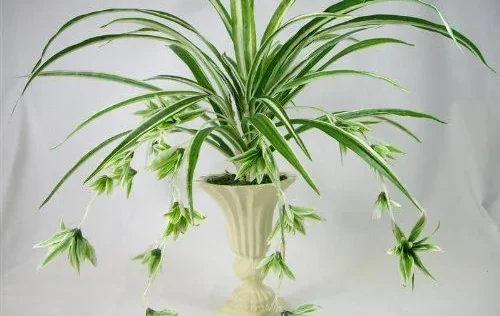
- East or West-Facing Windows: These directions offer the right balance of light intensity and duration.
- Sheer Curtains: If the light is too intense, placing a sheer curtain can diffuse the sunlight, providing the plant with filtered light.
- Avoid North or South-Facing Windows: North-facing windows may not provide enough light, while south-facing windows can be too harsh without proper shading.
Signs of Improper Lighting
Recognizing the signs of improper lighting is essential to ensure your spider plant thrives. Spider plants that do not receive enough light often exhibit pale or yellowing leaves, leggy growth, and a noticeable reduction in the production of baby plantlets.
On the other hand, too much direct sunlight can scorch the foliage, causing brown, crispy leaf tips and faded or bleached colors. Curling or wilting leaves are also common indicators of excessive light exposure.
Paying attention to these symptoms allows you to adjust your spider plant’s placement, either moving it closer to a source of bright, indirect light or shading it from harsh direct sun.
For more inspiration on creating a balanced and beautiful indoor space, explore Martha Stewart Home Décor, where timeless design meets natural elegance. Additionally, using grow lights in low-light environments can help maintain optimal growth and leaf vibrancy.
Too Much Light
- Scorched or crispy leaf edges.
- Faded or bleached leaf colors.
- Curling or wilting leaves.
Too Little Light
- Leggy or elongated stems.
- Pale or yellowing leaves.
- Reduced growth rate.
If you observe these symptoms, adjust the plant’s location accordingly to meet its light requirements.
Additional Care Tips

- Watering: Allow the top 1–2 inches of soil to dry out between waterings to prevent root rot.
- Humidity: Spider plants prefer moderate humidity levels. Regular misting or placing the plant on a humidity tray can help maintain optimal conditions.
- Fertilization: Feed the plant with a balanced, water-soluble fertilizer during the growing season (spring and summer) every 4–6 weeks. Avoid fertilizing during the dormant period (fall and winter).
Frequently Asked Questions
Can spider plants survive in low light?
Yes, spider plants can survive in low light conditions but may exhibit slower growth and fewer pups. For optimal health, providing bright, indirect light is recommended.
How can I tell if my spider plant is getting too much light?
Signs include scorched leaf tips, faded colors, and curling leaves. If these occur, move the plant to a location with indirect light.
Is artificial lighting sufficient for spider plants?
Yes, artificial lighting can supplement natural light. Using LED or fluorescent grow lights for 12–14 hours a day can support the plant’s growth.
Conclusion
Providing the right amount of light is essential for the overall health, growth, and vitality of your spider plant. These resilient houseplants thrive when exposed to 4 to 6 hours of bright, indirect light daily, which encourages strong, vibrant foliage and supports the production of baby plantlets, commonly known as “pups.” Avoid placing your spider plant in direct sunlight, as the intense rays can scorch the leaves, causing brown tips or a faded appearance.
Consistently providing optimal lighting not only enhances the plant’s aesthetic appeal but also ensures that it remains vigorous and disease-resistant. Additionally, rotating your spider plant occasionally helps all sides receive even light exposure, promoting uniform growth and fuller, bushier foliage.
If you’re passionate about indoor gardening, you might also enjoy learning about growing aloe vera indoors, another rewarding plant that thrives under similar light conditions. By carefully managing light exposure, your spider plant will continue to flourish indoors, becoming a beautiful and lively addition to your home.







